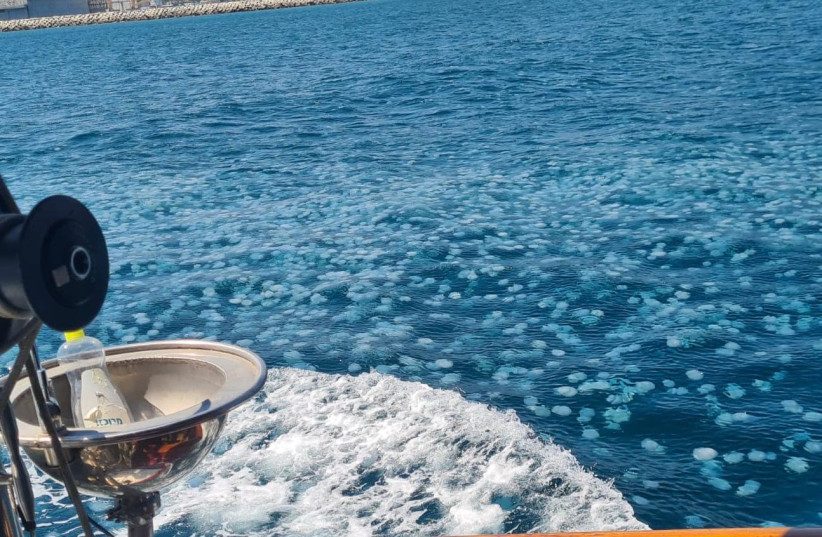While there is a surplus in the amount of jellyfish along Israel’s coast this season, it does not necessarily mean this is the norm for seasons to come.
Prof. Dror Angel of the University of Haifa’s Department of Maritime Civilizations said that the unusually large pools of jellyfish sitting along Israel’s northern border, although problematic, are not and should not be an urgent cause of concern.
Why not?
Prof. Angel explains that because jellyfish blooms are a transient mass that lives both above and beneath the ocean’s surface, counting the quantity of jellyfish is extremely difficult and nearly impossible to do. Still, it is the intensity of this particular bloom that is quantifiably unusual.
While yearly jellyfish migration is common to Israel's coast, this year’s abnormal bloom is possibly a result of climate change and the extensively long, cold winter Israel had this past year.

“The past winter has been very rainy and cold at times. This may have affected the intensity of the blooms and their life cycle,” Prof. Angel explained. “We know for sure if there’s heavy rain, then lots of nutrients get washed into the sea. So there's more algae, plankton and more food for the jellyfish to eat.”
Likewise, this year's surge of jellyfish has caused concerns over what the new norm of jellyfish season may look like.
Placing it in the right jellyfish context

That being said, Prof. Angel was quick to remind the public of Israel’s past jellyfish seasons; the last large blooms arose in 2015 and again in 2017. Additionally, Prof. Angel explains there are talks of another unusually cold and long winter expected in 2023, meaning there will be another surge of jellyfish that following summer.
“Biology isn’t an exact science. There may be something that comes along in the ecosystem and eats the jellyfish giving us a small bloom next year,” he said.“What's important to emphasize is that while jellyfish are a natural phenomenon, humans may be exacerbating matters. Pollution tends to equal more jellyfish.”
The presence of jellyfish, which will potentially push into the Syrian and Turkish waters, means much more than just an irritation for beachgoers on Israel's northern coast.
What about the environment?
On an environmental level, the increasing jellyfish population will have a potentially damaging effect on the food web as the increase in jellyfish means increased competition for food. Fisheries and desalination plants will be especially impacted as it means that the fishes they depend on for business will starve.
Meanwhile, researchers are studying the movement and behavior patterns of jellyfish, specifically the formation of blooms. Prof. Angel surmises that their swarms are a result of a tendency to be grouped together through the communication of sorts for defensive and reproductive purposes.
